Businesses in the Software as a Service (SaaS) industry thrive on driving organic conversions from websites and other sources. And this requires boosting their SEO game.
As a SaaS business, you need a full-stack SEO strategy that includes the following:
- Strong Planning: Approach to content, defining its scope, and creating a content calendar
- Systematic Processes: Following a regular cycle of SEO research and content creation
- Website Reporting: Keeping an eye on where you stand in Google’s SERPs compared to the market and your competitors.
If you aim to drive organic traffic through SEO, you will need to embrace the right actions that will deliver the results you seek. In this post, we’ll run through some SEO tips and techniques.
But first, let’s explore the basics.
What is SaaS SEO?
SaaS SEO involves creating content that improves organic traffic, by showing up prominently on the SERPs.
Common activities include creating landing pages for products, generating product-related content, and crafting blogs that add value for your website visitors.
SaaS SEO across the various niches have similar challenges. Specifically, you’ll run into competition from business aggregator sites and limited search volume for important target keywords.
For starters, refer to the key SEO metrics every marketer needs to understand.
To overcome these challenges, you’ll want to deploy SaaS SEO techniques that target prospects who do the following:
- Browses information about software similar to yours. Once they identify that software, they may want to explore more about what your software can offer and whether it can meet their particular business needs.
- Currently uses competitive software solutions but is now looking for similar alternatives or a replacement.
- Looks forward to going through content related to your software but may not directly seek similar services. Even without this interest, you can focus on nurturing them along your Buyer’s Journey toward consideration, and hopefully, an eventual purchase.
Most Important SaaS SEO Strategies to Adopt
Now that we’ve identified what target audience to get in front of, let’s consider the steps it takes to actually place your domain there.
1. Map Keywords to Stages of Your Buyer’s Journey
The buyer’s journey is a process that begins when a buyer is introduced to your business. It goes through different stages, including engaging with the company content, interacting with the sales team, and ultimately, making a purchase.
Therefore, SEO strategists must consider crafting content that matches the intent at each pitstop along this path.
For instance, identify whether the content is to create awareness, enable consideration, or drive decision-making.
- Awareness: Here, map applicable general keywords with a large volume. Commonly, they define or discuss overarching themes—for example, efficiency, cost-effectiveness, problem-solving, etc.
- Consideration: Use keywords with emphasis on curiosity. The awareness would make users familiar with their business’s issues. Here, consider introducing your software as the solution to these issues.
- Decision-making: This is where you’d use transactional keywords that people search before making a purchase. It involves using terms like ‘buy,’ ‘pricing,’ ‘tool,’ ‘best,’ ‘review,’ etc.
Check out these terms you can include at different stages of buyers’ journey:
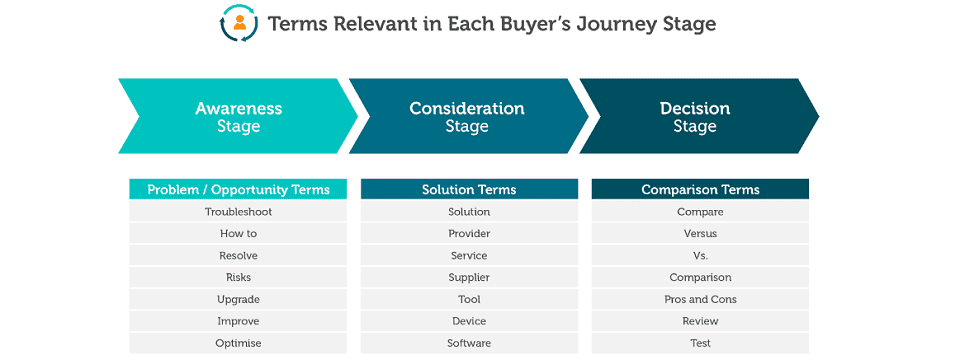
To successfully map all of these keywords to each stage of the content funnel, your content team will need to clearly understand what they should be writing about and what keywords to use in their content marketing efforts.
Once you are clear with the buyer’s journey and relevant content, you likely want to synch long term plans with go-to-market strategies using a platform such as product management software. This helps everyone in the team understand the product life cycle better.
With a clear understanding of all the product-specific touchpoints, your marketing, sales, and customer support teams will be able to operate in tandem. It contributes to creating product-led content that prioritizes what matters to users.
2. Focus on Producing Product-Led Content
Using the keyword research you did for different stages of buyers’ journeys, you should be well positioned to create product-led content.
Consider content that your competition is publishing. Take time to discover their topics, review the content quality, and determine where they rank for important keywords. This will help you gauge your efforts and audience better.
By creating product-led content using keyword research, you should be able to better pursue organic search improvements. This means you will have traffic from users having multiple search intents.
It helps uncover hundreds of different subjects that people search for and are related to the issues your product helps alleviate.
Many marketers judge a keyword based on its search volume. But there’s another angle — every piece of content ranks for many keywords with different search volumes. Plus, all keywords are unique in how competitive it is to move into separate target SERPs.
And the one keyword you’re looking at may contribute to just a tiny fraction of the overall traffic. This is when to focus on traffic potential when creating product-led content.
For instance, product content at the Top of the Funnel (ToFu) will align the common user intent, drawing more traffic (due to introductory topics). On the contrary, bottom of the funnel (BoFu) content offers less traffic but higher chances of conversion (due to product-specific content).
The product takes center stage when adopting a product-led content strategy. Use this rule of thumb for understanding whether or not your content fits this description: Can you tag this piece on our product and keep it relevant? If the response is “yes,” it’s product-led content.
Here are a few tips for getting started with product-led content development.
Know Product Uses
Identify various ways through which users can benefit from your product.
All marketers should have in-depth knowledge of what their product offers, how it can be used, and how its users can edge out others with its features. Such content includes case studies, testimonials, whitepapers, etc.
Find Topics With Search Traffic Potential
Content traction takes time. You may expect regular visits if Google continues to favor your content.
For this to happen, frequently check your Google Search Console and analyze queries that bring people to your SaaS website.
Alternatively, you can use Ahrefs:
- Navigate to Ahrefs’ Keywords Explorer
- Enter a list of relevant keywords for your business
- Click on matching terms report
Knowledge-seeking questions like “why,” “how,” and “what” are some of the common modifiers in a long tail keyword. When you know how often people search for these keywords, you can better plan for content that satiates their interest.
Ahrefs can offer matching terms in a question format to help identify what product-based content you should be creating.
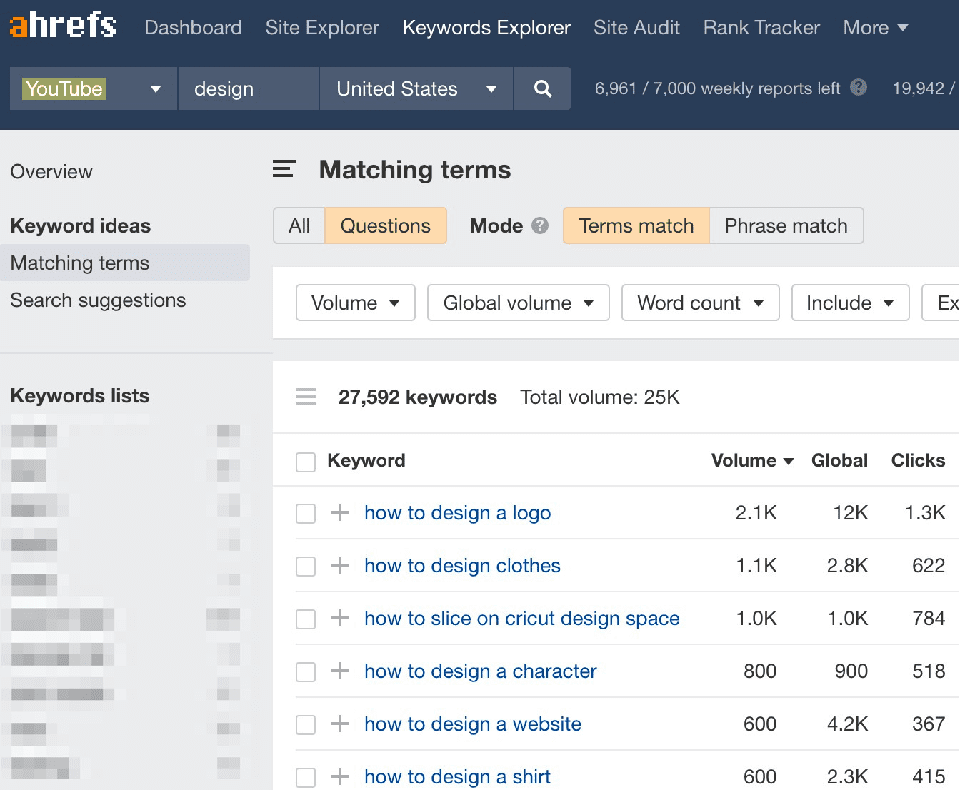
The above data shows thousands of niches in which you might create content.
Skim the items on the list and choose the topics that you think will generate the most interest based on Search Volume, Clicks, Traffic Potential (TP), etc.
Not Too Sales-Focused
Product-led content must not be a sales infomercial. Extremely promotional content can stray readers away from the website.
The goal is to tell readers how your product addresses concerns, rather than advertising its features and promoting client testimonials.
Try weaving your product information into content only contextually, which is far more subtle than pushing for sales at every opportunity. If bringing up your product might appear forced or awkward, just don’t do it.
This doesn’t mean reconsidering the product-led content altogether. Pivot to product-based SEO that compliments the content by catching the reader’s attention, discussing the problem at hand, and showing how the product is the solution (along with its benefits).
And always remember to include a compelling call to action that motivates readers to move down the Buyer’s Journey toward asking for more information and entering the consideration stage.
3. Optimize Technical Structure and Usability
SaaS SEO alone cannot act as a one-person-army. It needs the support of the content’s technical structure and usability. These aspects affect how Google scans and indexes your content, as well as how soon it may rank.
Google can rank a site more quickly if you provide an XML sitemap, remove crawl blocks from a robots.txt, set clear canonical tags, and ensure a good user experience with solid load times. The faster a site is likely to rank, the less time and effort Google has to use to crawl and index it.
Your site’s robots.txt, sitemap.xml, and the way it processes CSS and JS files are all things that Google will review during a scan.
It also evaluates the speed of your Content Delivery Networks (CDNs). All such factors can impact user engagement, search engine rankings, and website traffic.
Once you’ve considered these SEO ranking factors, also be sure you are properly accounting for the following important SaaS SEO ranking factors:
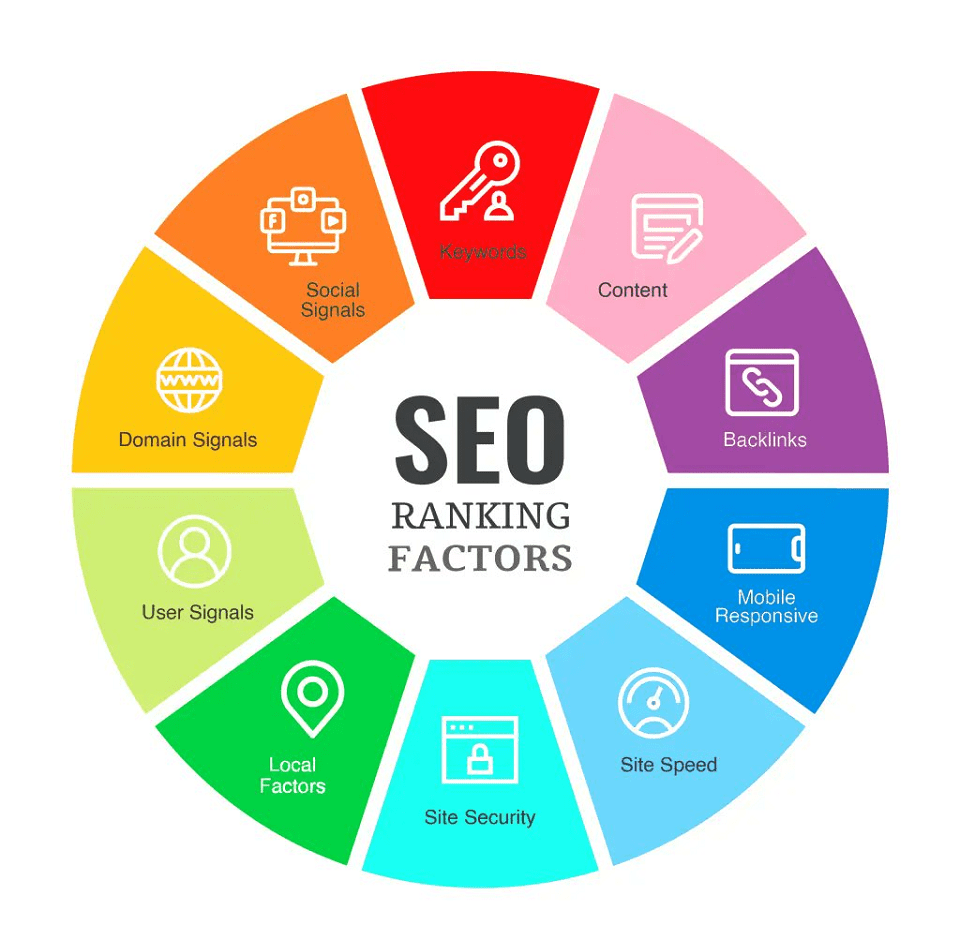
If you are running an established SaaS business, you probably have a group of developers and designers who are responsible for various aspects of your website, ensuring that everything runs well.
They can help you with SEO tasks such as:
- Keywords in meta title and description
- Adding backlinks (both internal and external linking)
- Consistent content publishing
- Site Security / SSL Certificate
- Keywords in URL
4. Avoid Siloed Content
To succeed at SaaS SEO, you owe it to yourself to spend time focusing on content integration. You may have all the necessary content pieces hosted on your site, showing a strong digital repertoire. But is you fail to integrate them in a strategic way, your work is still incomplete.
Ideally, your SaaS digital content assets must have the following:
- Blog landing pages and posts
- Case studies
- Tutorial videos
- Testimonial videos
- Related blog posts
- Testimonials
- Whitepapers
- Datasheets
SaaS businesses would often have such digital assets in silos. For instance, your audience may watch videos on YouTube, read articles on a website, download case studies over an email, etc.
But what about a cohesive content experience? This requires tying up one digital asset with another.
Let us consider a few examples.
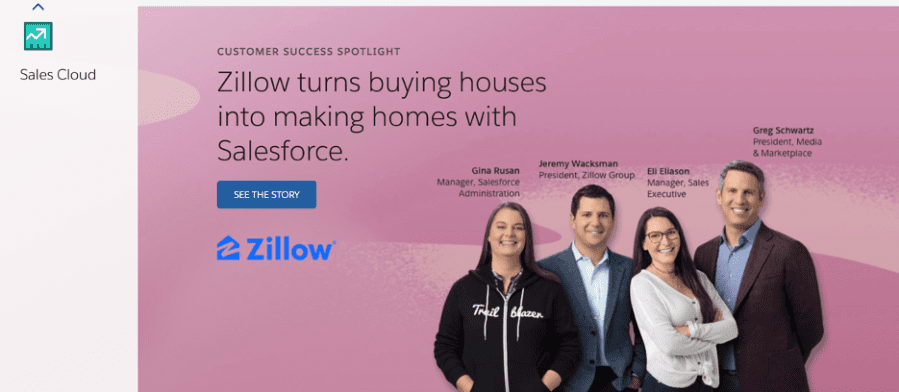
Salesforce, for instance, has a CTA for a case study on this particular product landing page.
When you open this case study, the website presents you with another CTA: “Watch the Story.”
It will open a video that highlights this case study.
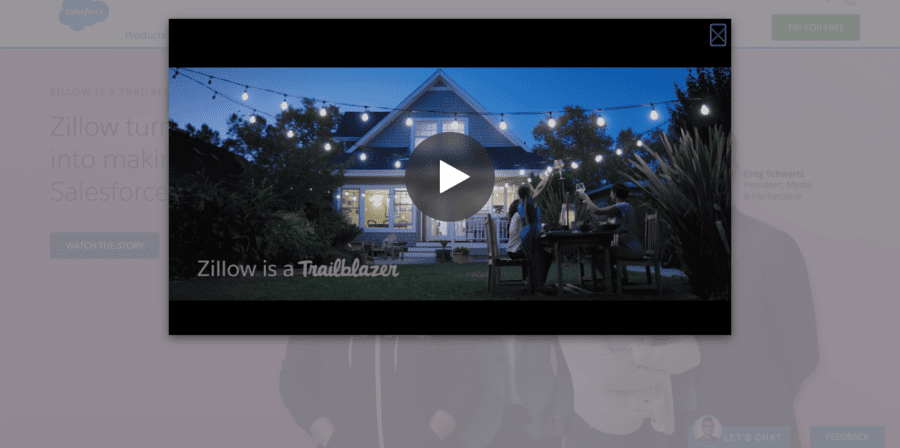
In another example, Salesforce continues to integrate its content on another “Persona” website.
The below image shows valuable help to video viewers on what they can do next. It offers multiple CTAs and helps navigate them to different content sections.
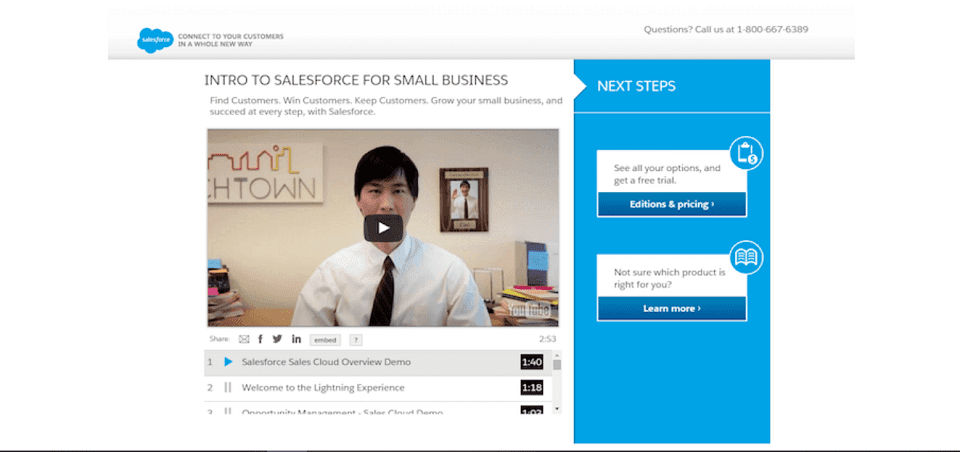
Salesforce doesn’t let its content exist in silos of the site. Instead, they include it on other related pages to improve UX.
Better integrating your content can boost UX, SEO, and conversions. I recommend considering this tactic a bigger priority than creating fresh SaaS content.
Summary
You can start with some of the above-mentioned SaaS SEO tips and strategies to drive business growth through content.
While there are many SaaS SEO techniques to explore, try identifying the most relevant ones by conducting a thorough SEO assessment and tracking results as you implement new strategies.
Here, you can consider your short-term and long-term business goals to pick the right one and stick to it.
To master the art of SaaS SEO, you’ll have to commit time, consistency, and significant investment. But you will find that it is all well worth taking on.
Be sure to tailor your content to match the target audience. Then, periodically review your SEO methods to stay competitive and on top of your SEO game for consistent results over time.
All images sourced by the author and attributed to original source via dofollow link credit.
Disclaimer: The views and opinions stated in this post are that of the author, and Return On Now may or may not agree with any or all of the commentary.
This guest post brought to you courtesy of Return On Now, Professional Austin SEO and PPC Services Company.
Tim Ferguson
Latest posts by Tim Ferguson (see all)
- SaaS SEO: 4 Tips To Drive More Organic Traffic - October 11, 2022
- 4 Tips to Promote Video Content - May 4, 2021




